The first time I saw cutwork embroidery, I was amazed. It looked like lace carved into fabric. That’s what cutwork is.
Cutwork is a machine embroidery technique where a part of the fabric is cut away, and the raw edges are finished with embroidery stitches to create intricate, open designs. It’s a beautiful mix of stitching and shaping, often used on linens, sleeves, collars, or decorative home items.
But when I wanted to try Machine embroidery cutwork, I figured out that,
Cutwork
Every embroidery machine can not do cutwork like chain stitch. This technique often requires special needles (like cutwork needles), digitized designs made for cutting, and sometimes even add-on software, depending on your machine.
Before jumping in, it’s essential to ensure your setup can handle it. If it can? Then you are in luck like me. So let’s do it and give me you some machine embroidery cutwork patterns free.
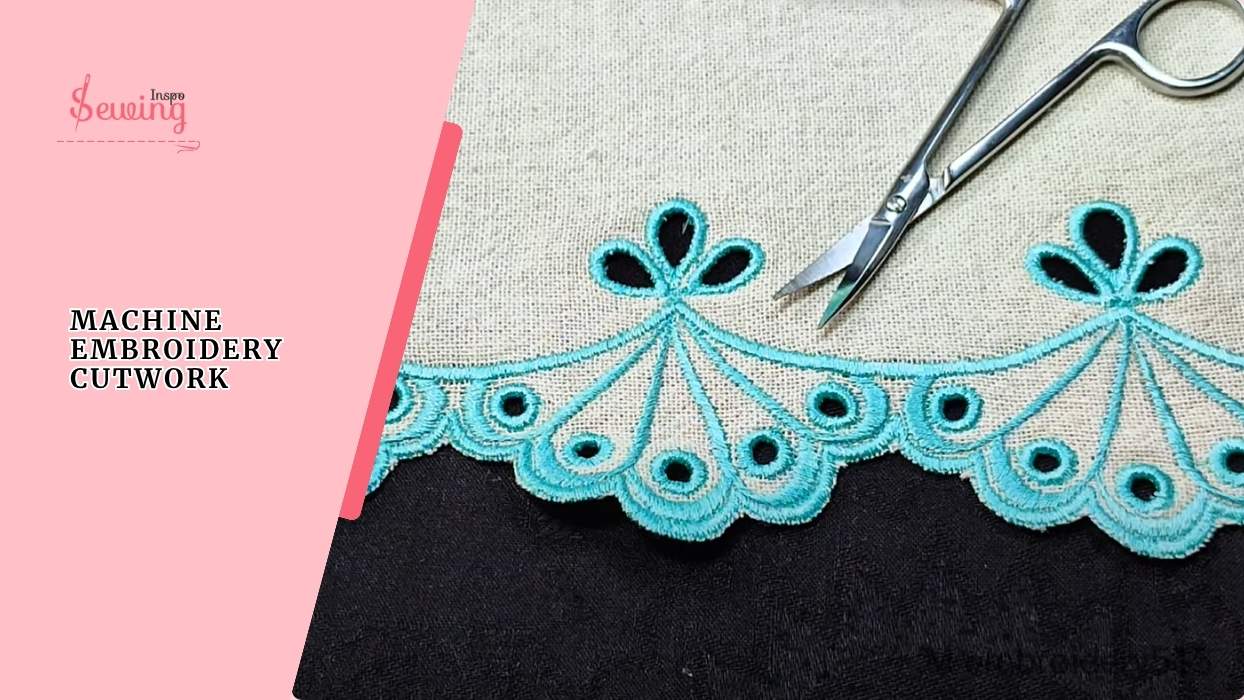
Table of Contents
What Is Cutwork Embroidery Used For?
Cutwork embroidery is used to add an elegant, decorative touch to both home textiles and clothing. Traditionally, it’s found on:
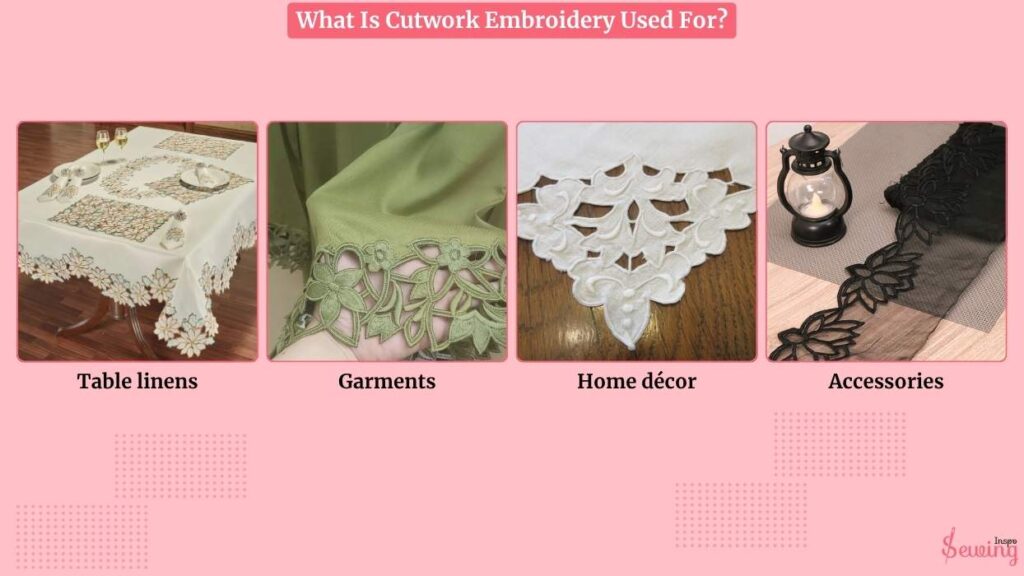
- Table linens
- Garments
- Home décor
- Accessories
Cutwork serves both aesthetic and functional purposes. It lightens up fabric by removing sections. Trust me, you won’t stop doing it once you understand how it works.
But yes, you can’t find Singer sewing machine stitch symbols; you have to do it yourself.
Cut Work Hand Embroidery Designs
Here is how a cut work design would look like-
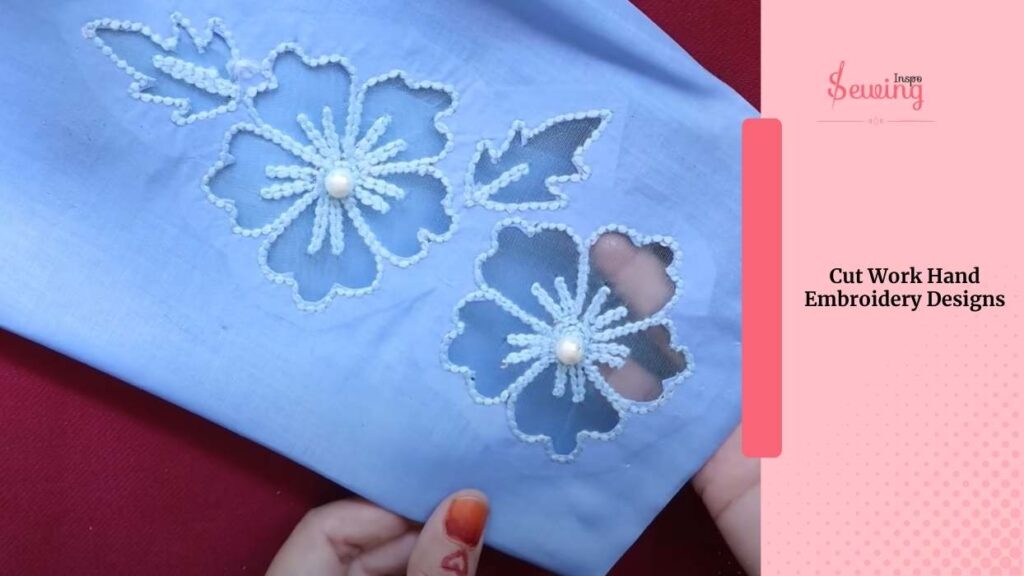
What Are The Different Types Of Cutwork?
There are around 100+ types of cutwork. All are stunning in their own way, but five types of cutwork caught my attention the most.
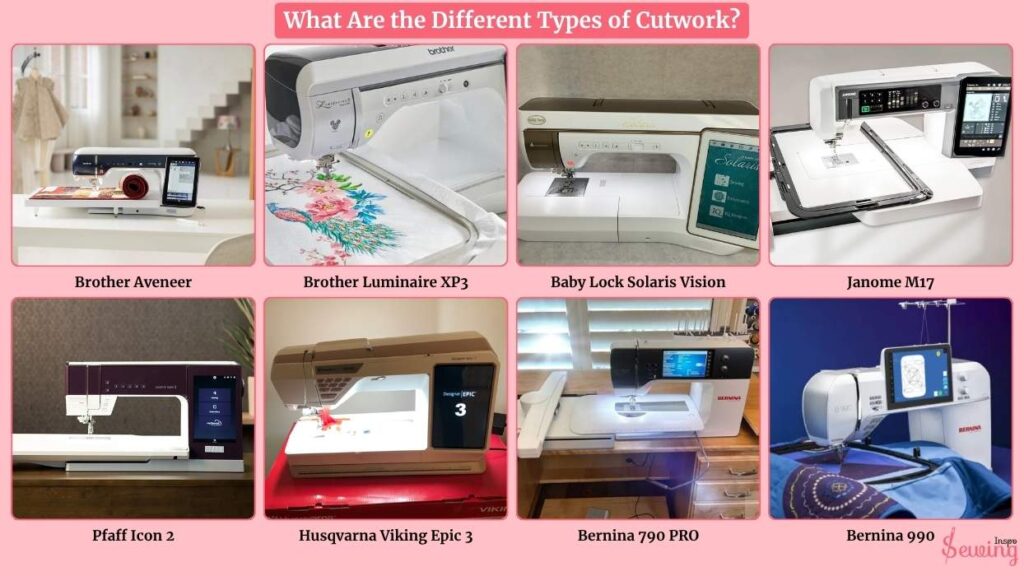
- Renaissance Cutwork
- Italian Cutwork
- Hardanger
- Chikankari
- Hakoba
Those are intense, but once it’s done, you can’t take your eyes from it. But today, I want to go with the easy one. Cause starting should be easy, right?
Some Best Sewing Machine For Machine Embroidery Cutwork For Beginners
Not all machines are capable of doing cut work embroidery. You need to buy a special machine, such as a chainstitch machine. So, I have tried a few and like some of the cutwork sewing machines,
- Brother Aveneer
- Brother Luminaire XP3
- Baby Lock Solaris Vision
- Janome M17
- Pfaff Icon 2
- Husqvarna Viking Epic 3
- Bernina 790 PRO
- Bernina 990
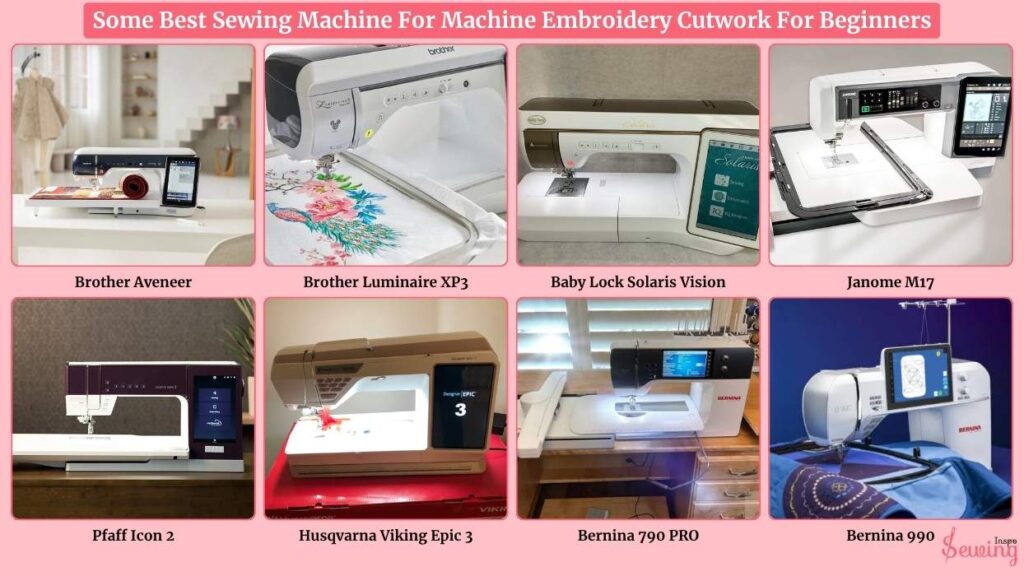
Machine Embroidery Cutwork Tutorial
To do cutwork on a sewing machine, follow the 9 steps,
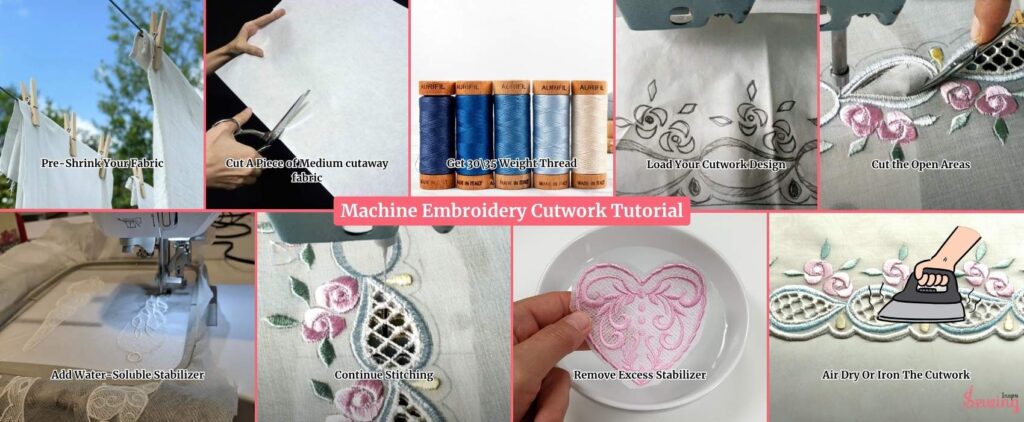
- Pre-Shrink Your Fabric
- Cut A Piece Of Medium cutaway fabric
- Get 30\35 Weight Thread
- Load Your Cutwork Design
- Cut the Open Areas
- Add Water-Soluble Stabilizer
- Continue Stitching
- Remove Excess Stabilizer
- Air Dry Or Iron The Cutwork
Pre-Shrink Your Fabric
Pre-shrink your fabric. This will keep your I toss my linen in the wash and give it a good dry. This keeps it from puckering later when all the thread tension pulls on the fibers. This helps to do any stitch easily. This mainly helps a lot in satin stitch on sewing machine.
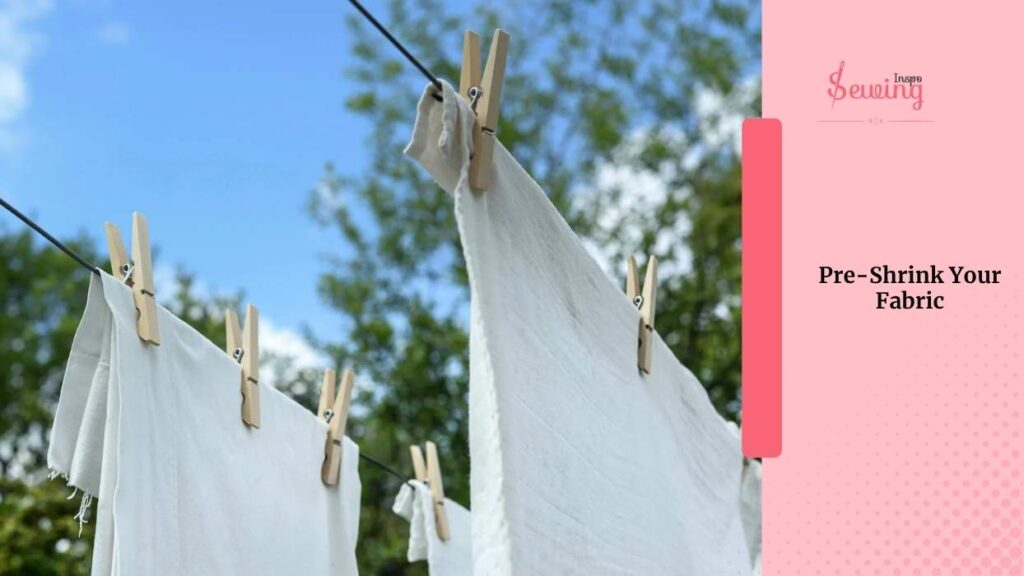
If you skip this, you might see warping or shrinkage after stitching, and that’s a heartbreaker after all your effort.
Cut A Piece Of Medium-Weight Cutaway Stabilizer
I cut the stabilizer about 1 inch larger on all sides. That means if my hoop is 5×7 inches, I cut an approx. 7×9 inch piece of stabilizer. This gives me enough room to hoop it securely and avoid edge tension.
Then I spray it with temporary adhesive spray (like 505). Gently smooth your fabric on top. No wrinkles! I even do it while doing flatlock vs overlock on some stretchy fabric.
Next, hoop both fabric and stabilizer tightly. I always tighten the screw until it feels firm and taut like a drum. I use this for ladder stitch sewing machine too.

Get 30\35 Weight Thread For Cutwork Embroidery
Cutwork needs strength in the thread. I always use 30 or 35-weight cotton thread in both the needle and bobbin.
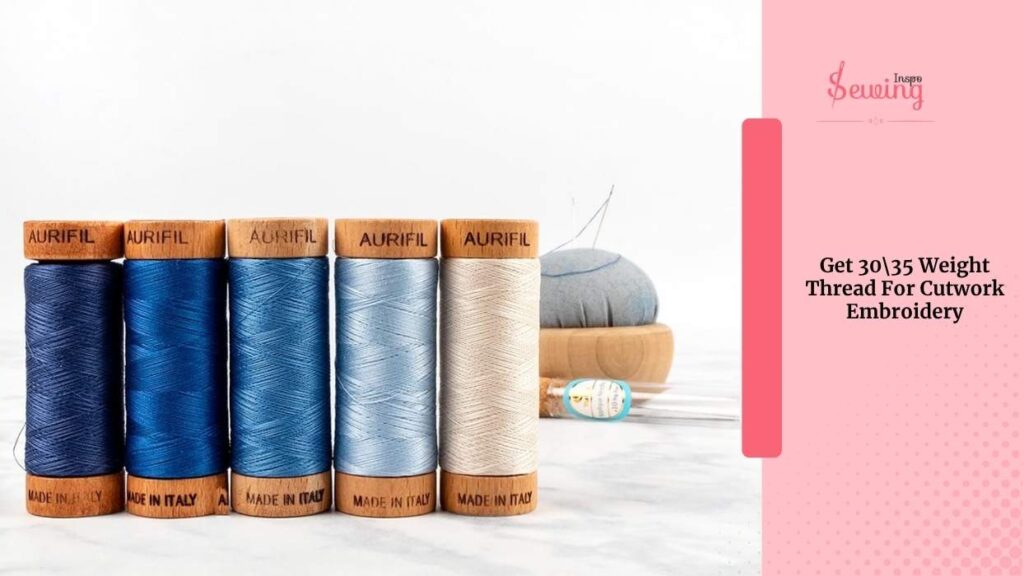
Why cotton?
It’s heavier than rayon or polyester, and that extra weight gives the cut areas structure. Some brands call it “mercerized” or “all-purpose,” but you can wind a bobbin with the same thread you’re using on top, since the backside of the embroidery will show.
Load Your Cutwork Design
Attach your hoop to the embroidery machine and load your cutwork design. The first part that stitches will be the cut lines. These outline the areas you’ll be removing later, and it will come out decorative.
Let the machine run this first part. Once it’s done, remove the hoop from the machine. But don’t unhoop your fabric! That way sewing machine drawing with labels easy.
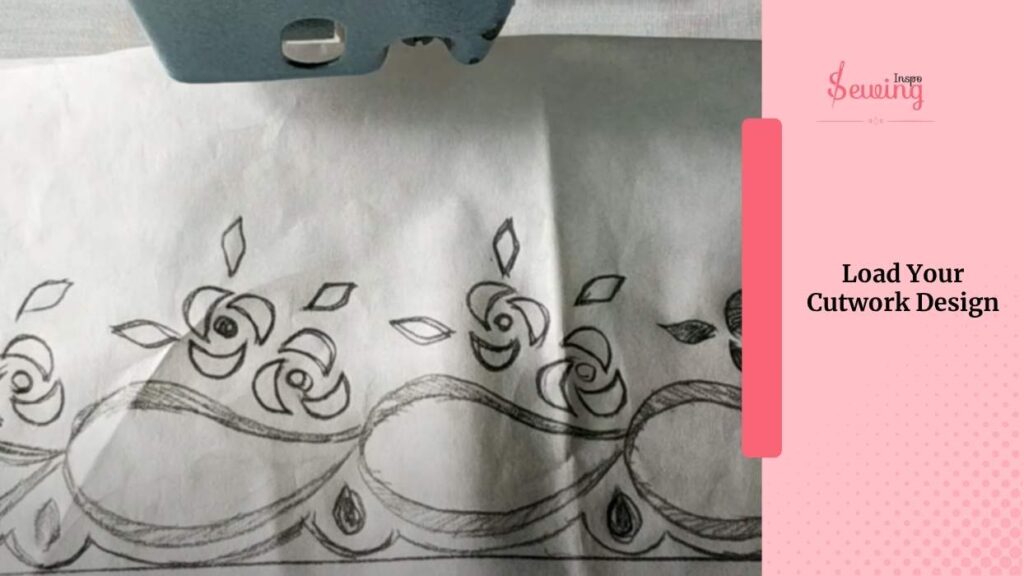
Cut the Open Areas Cutwork Pattern
Lay your hooped fabric on a cutting mat. Using a sharp craft knife or precision scissors, carefully cut between the stitched cut lines.
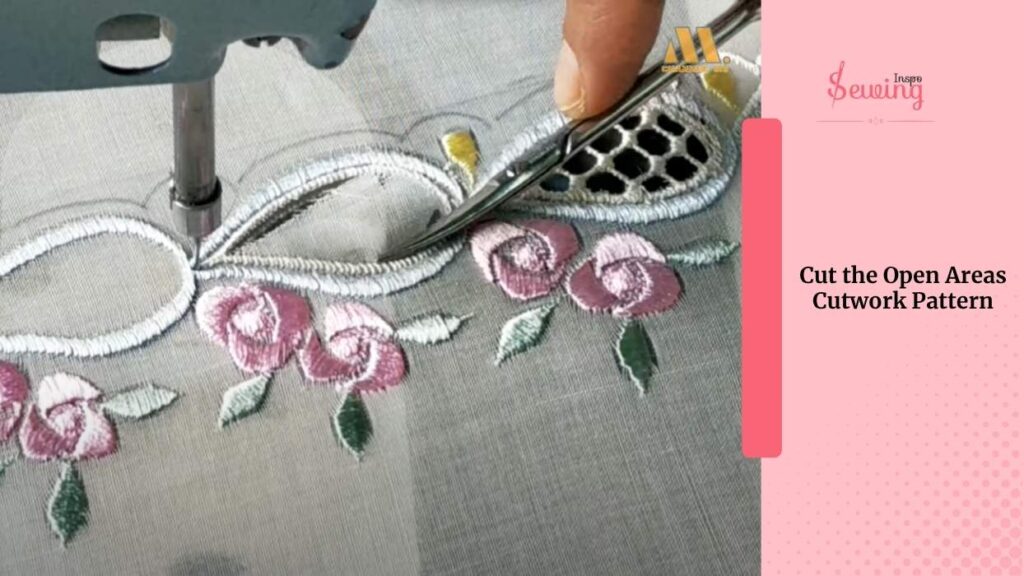
Cut through both the fabric and the cutaway stabilizer. This creates those open “windows” the design will wrap around.
Add Water-Soluble Stabilizer
Cut a piece of water-soluble stabilizer (like Vilene) to the same size as your hoop. I use double-stick tape to secure it to the back of the hoop, covering the cut-outs.
It should sit directly under the newly created open spaces.
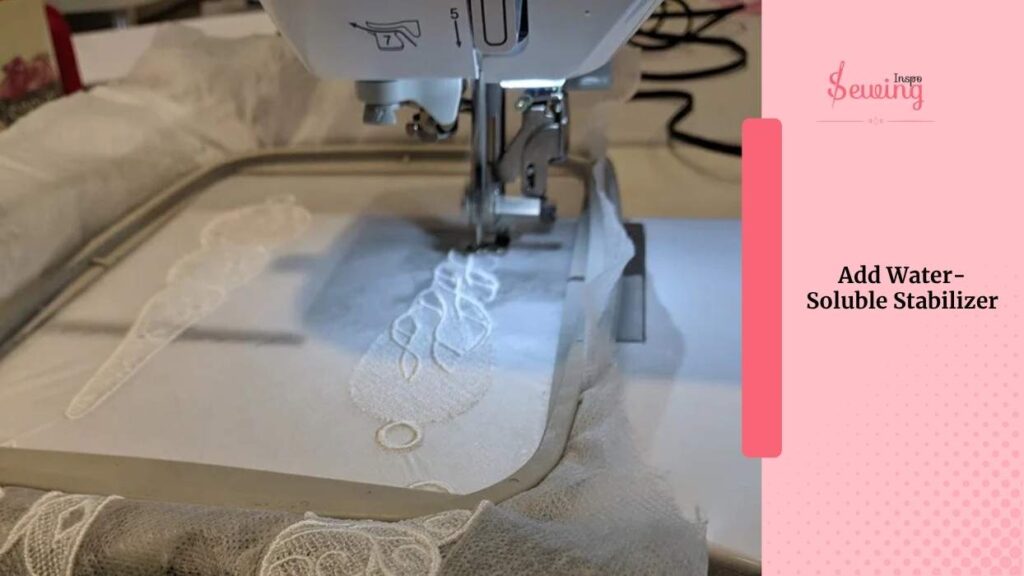
Continue Stitching Cutwork
Attach the hoop back to your machine and continue the embroidery. The machine will stitch a zigzag tack down stitch around the raw edges of the cut-out areas. This anchors the edges and the water-soluble backing together.
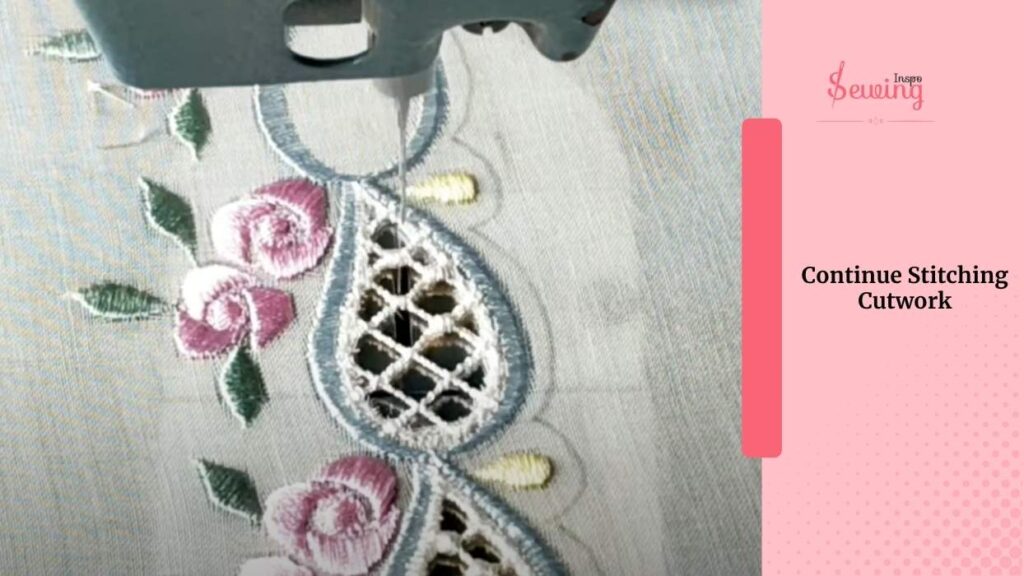
Then it’ll stitch the rest of the design, usually decorative satin stitches that go around and over the open areas.
This step really brings the cutwork to life.
Remove Excess Stabilizer Of Cutwork
Unhoop the fabric carefully. Trim off the excess cutaway and water-soluble stabilizer from the back.
For the leftover water-soluble bits inside the openings, use a damp paper towel to gently dab the stitches or hand wash the fabric with mild detergent.

Air Dry Or Iron The Cutwork Embroidery
Let it air dry completely,
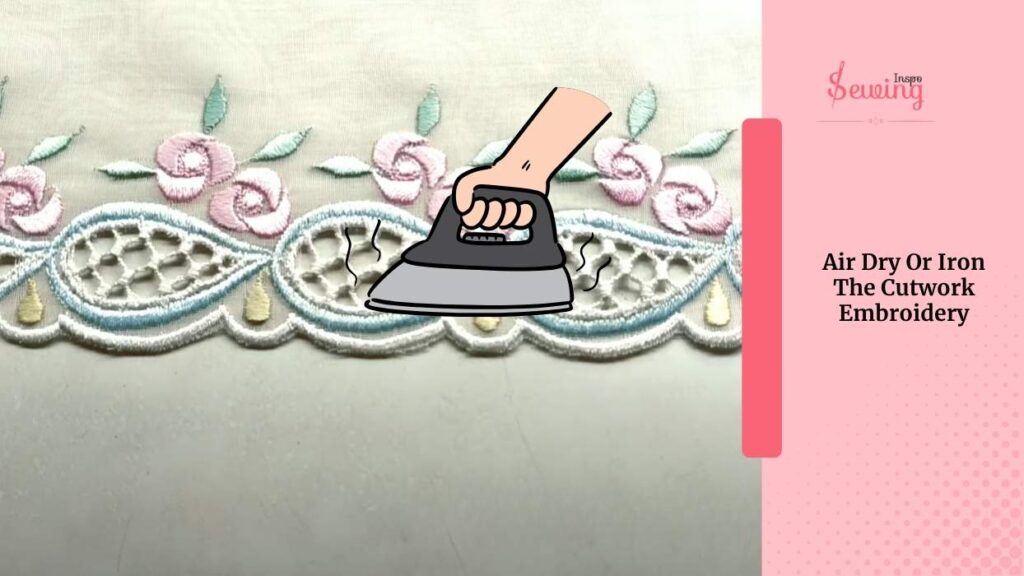
then gently press it using a pressing cloth and iron to smooth out any wrinkles.
And you’re done!
If you want a more visual tutorial, then watch this video
Machine Embroidery Cutwork Pdf
If you are worried that you might forget some steps, then download these steps.
Machine Embroidery Cutwork Patterns Free
A new cutworker might feel lost, wondering what to do. Well, stop thinking and use this pattern instead.
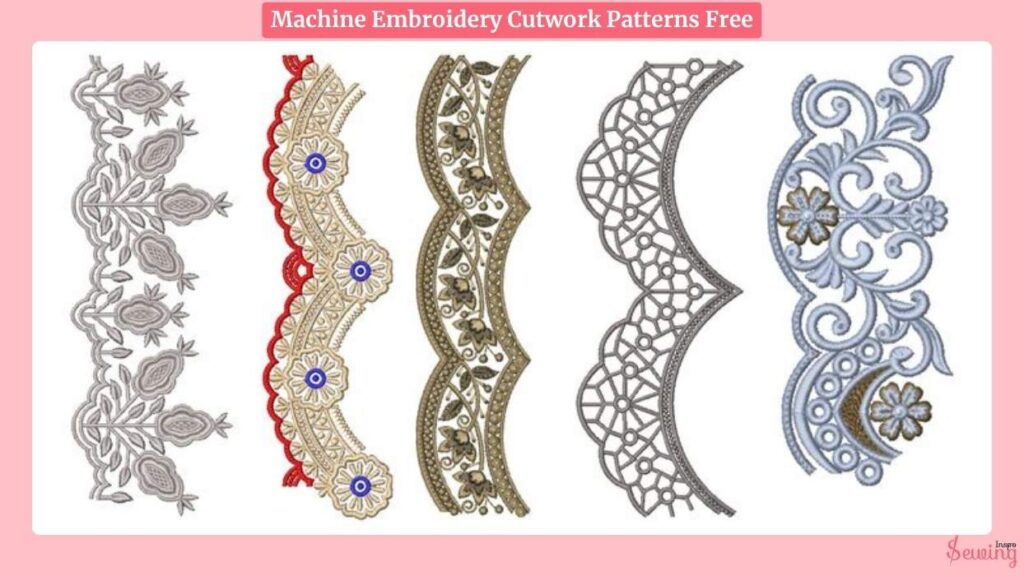
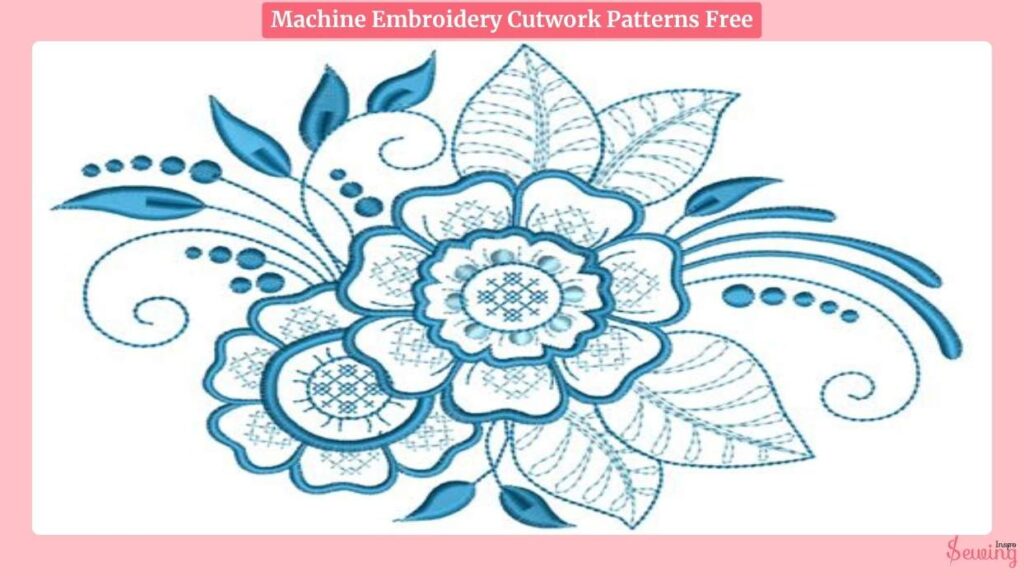

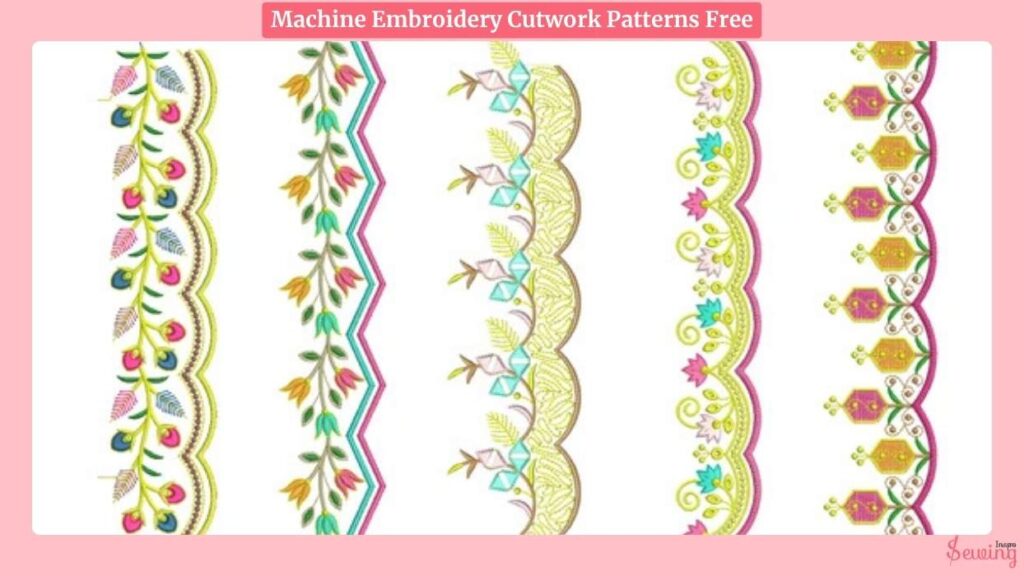
Cutwork Machine Embroidery Designs Free Download
Now, if you want to do a whole design for a sewing project, then use this
Machine Embroidery Cutwork Border Designs
If you wanna use cutwork on broder then use this idea as reference-
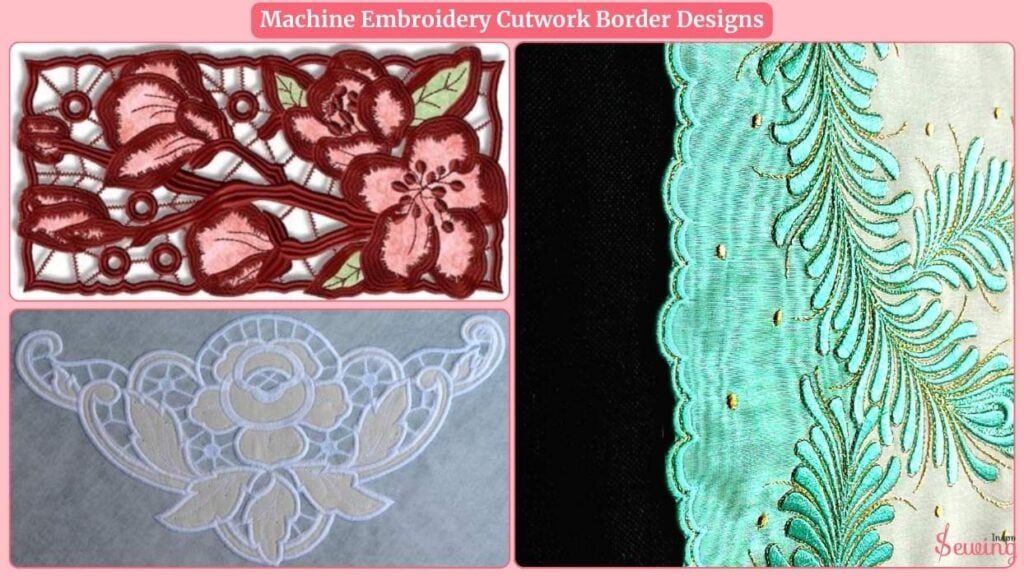
Frequently asked questions
Do I need special software for cutwork embroidery?
Yes, if you’re digitizing your own cutwork designs. You’ll need embroidery software that supports cut lines and layer sequencing (like Wilcom, Hatch, or Bernina Toolbox). If you’re just using pre-made cutwork files, you typically don’t need extra software.
What’s the difference between cutwork and freestanding lace?
Cutwork is stitched directly onto fabric, and sections of that fabric are cut away during the process. Freestanding lace is stitched entirely on stabilizer, with no base fabric, so the final design stands on its own. Cutwork gives you a hybrid look—part fabric, part lace.
Final Thoughts
Cutwork machine embroidery might seem a bit advanced. But once you’ve done it step-by-step, it becomes one of the most satisfying techniques.
With the mix of lace-like cut-outs and solid stitching, it instantly upgrades anything from napkins to clothing with elegance.
If you’ve made it this far, congrats. You’ve stitched something truly timeless.
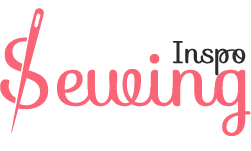

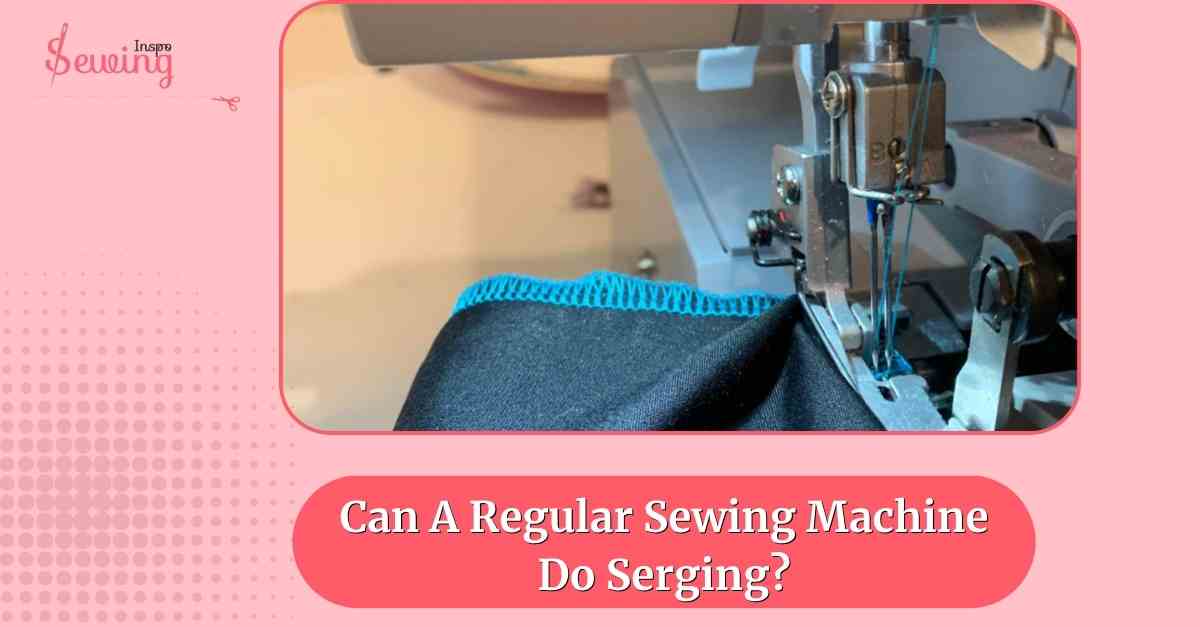
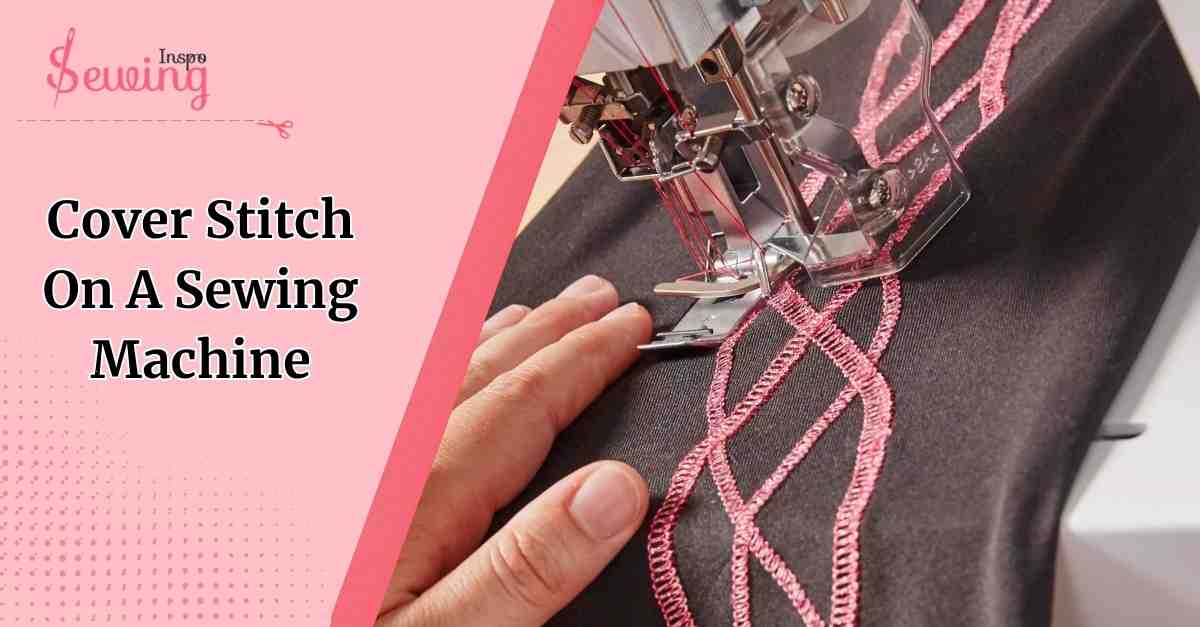
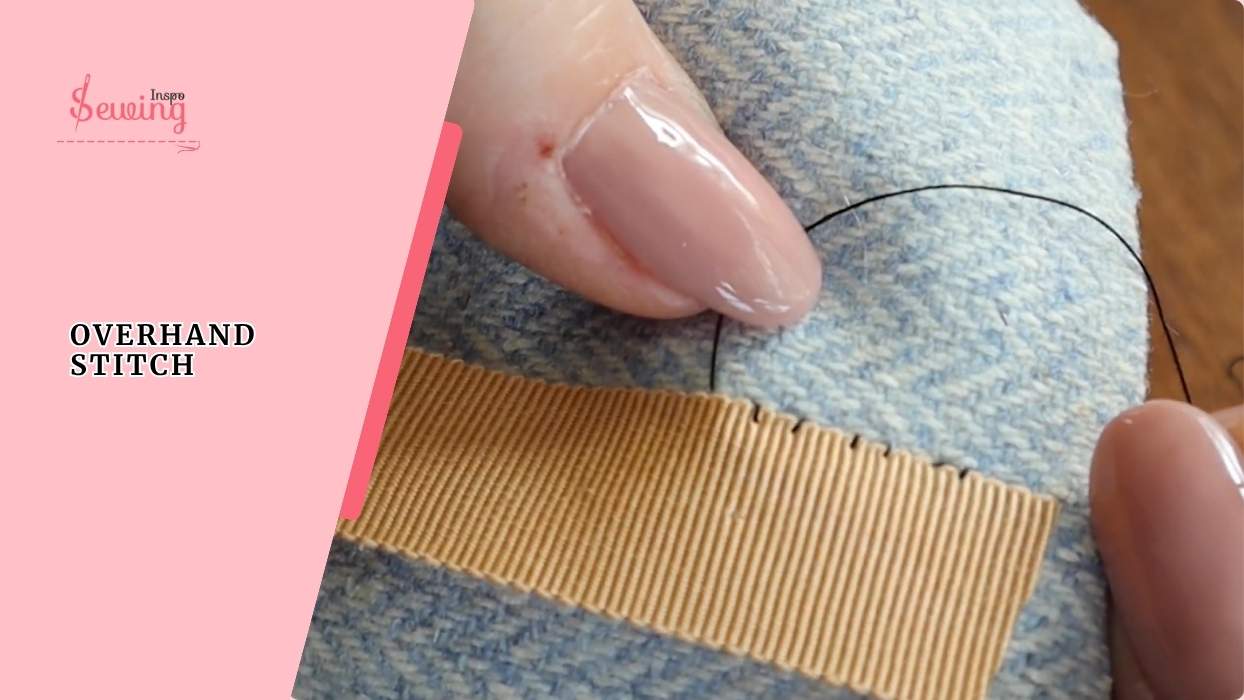
Leave a Reply